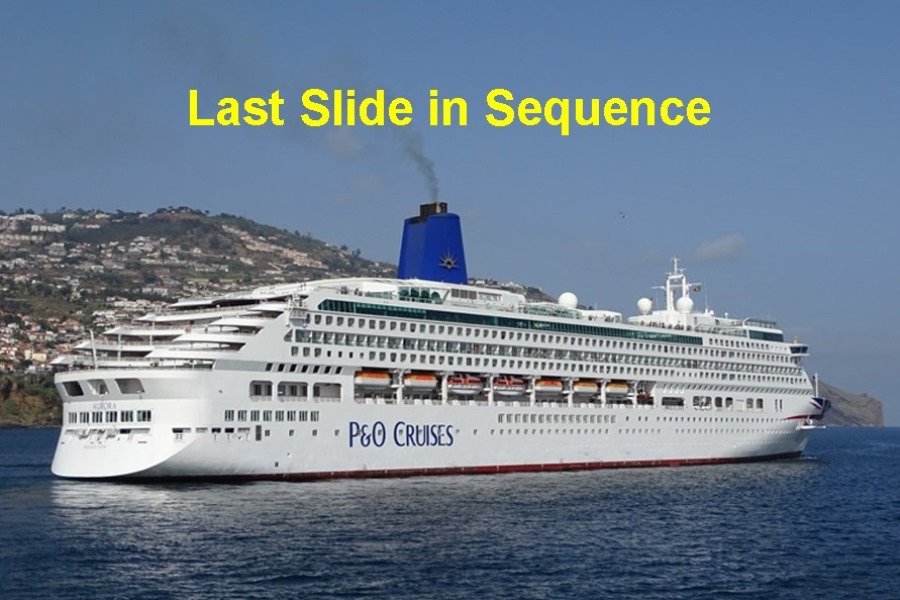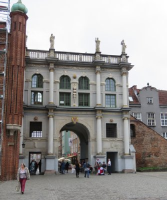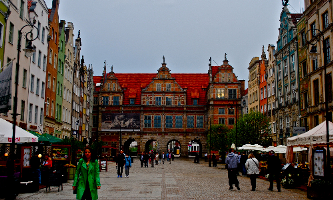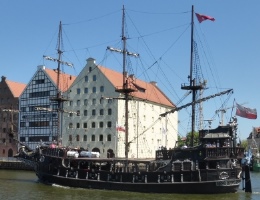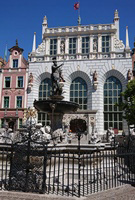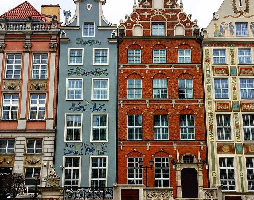Gdynia & Gdansk, Poland
(24th May 2018)
Our next port of call was Gdynia which is effectively the port for the city of Gdansk. Endlessly caught in a tug-of-war between Germany and Poland over the centuries, the end of World War One saw the League of Nations come up with a hare-brained solution to the ceaseless bickering by assigning it the title of Free City of Danzig. However, this became the trigger for the start of WW11 as Adolf Hitler soon sees the government of the Free City of Danzig come under the control of the Nazis. Within the Free City of Danzig, Nazi support was at an all-time high among the largely German local population, which Hitler’s government had been trying to annex into the Third Reich for years.
In 1939, WWII starts with Nazi Germany’s September 1 attack on Poland’s military posts on Westerplatte as Hitler invades to re-incorporate Danzig to the German Reich. Although the Germans won the battle, but against all odds, the outnumbered and outgunned Polish soldiers were able to keep a force more than ten times their number at bay for seven days. German General, Friedrich-Georg Eberhardt, was so impressed with the valor and heroism of the Polish forces that, following the battle, he allowed Polish Major Henryk Sucharski to carry his saber into captivity and saluted the fallen Polish forces. Gdansk is also where the Solidarnosc (Solidarity) movement started in 1980 and, under the leadership of Lech Walesa, Poland freed itself from communism.
We took the shuttle into the centre of Gdynia but had already made up our minds to catch a train to Gdansk and after directions from a local found the station and caught the train for the 30 minute ride as far as the old town of Gdansk. As a consequence of the bombardment by the Germans the old town was virtually destroyed (image right) but it has been painstakenly rebuilt in the same style. When you see the beauty of the place now it's hard to imagine the bombed wreckage shown at the end of the war.
The center of the old town is the Long Lane or Ulica Dluga which leads from the Golden Gate to the Long Market and the Green Gate. This is a tourist mecca with many shops and restaurants to rest and watch the world go by. We had a nice walk down through the Green Gate to the waterfront by the Motlawa river where there was a fake sailing ship converted into a floating bar and the original Gdansk Crane, a medieval crane that used people in huge wheels (like hamsters) to power the crane and load or unload ships.
The Long Lane is also known as the Royal Way and right in the middle is the Neptune’s Well a key symbol of Gdansk; the bronze statue was cast in 1615 and the Well became operational in 1633. The Royal Way is also renowned as the place to purchase amber where there are many shops. Poland in general is well known for its amber trade. Jane and Marion did a bit of window shopping but fortunately didn't spend any of our hard earned cash - personally I don't like amber - it looks like the sort of stuff you find on the beach!!
We made our way back to Gdynia via the train but somehow we got off at the wrong station in Gdynia and had to take a taxi back to the ship; actually it only cost the four of us Eu5 and was well worth the expense as we were actually lost.
 "Prison Tower & Torture Chamber (left) - originally built as part of the city’s fortifications in the second half of the 14th century. The Golden Gate (right) was created in 1612–14 in place of a 13th-century gothic gate; it is located at one end of Long Lane where, together with the Prison Tower, it forms a part of the old city fortifications."
"Prison Tower & Torture Chamber (left) - originally built as part of the city’s fortifications in the second half of the 14th century. The Golden Gate (right) was created in 1612–14 in place of a 13th-century gothic gate; it is located at one end of Long Lane where, together with the Prison Tower, it forms a part of the old city fortifications."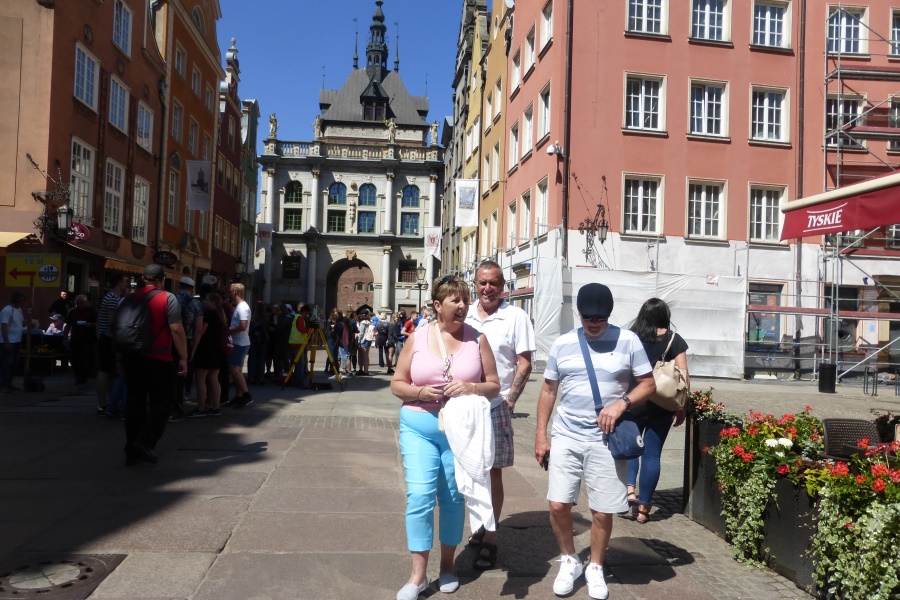 "In front of the Golden Gate."
"In front of the Golden Gate."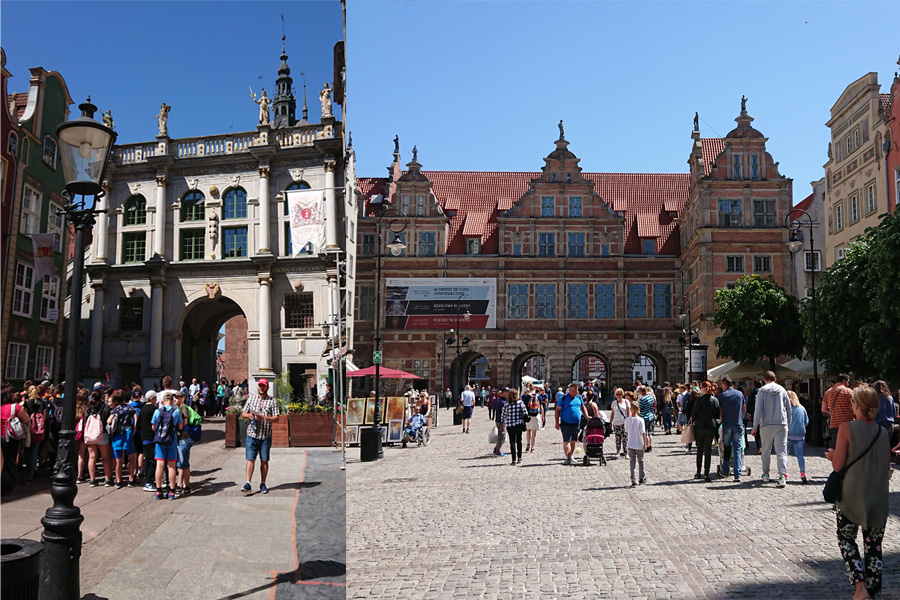 "Each end of the Long Lane with the Golden Gate at one end and the Green Gate at the other, probably one of the most visited places in Gdansk.
"Each end of the Long Lane with the Golden Gate at one end and the Green Gate at the other, probably one of the most visited places in Gdansk. 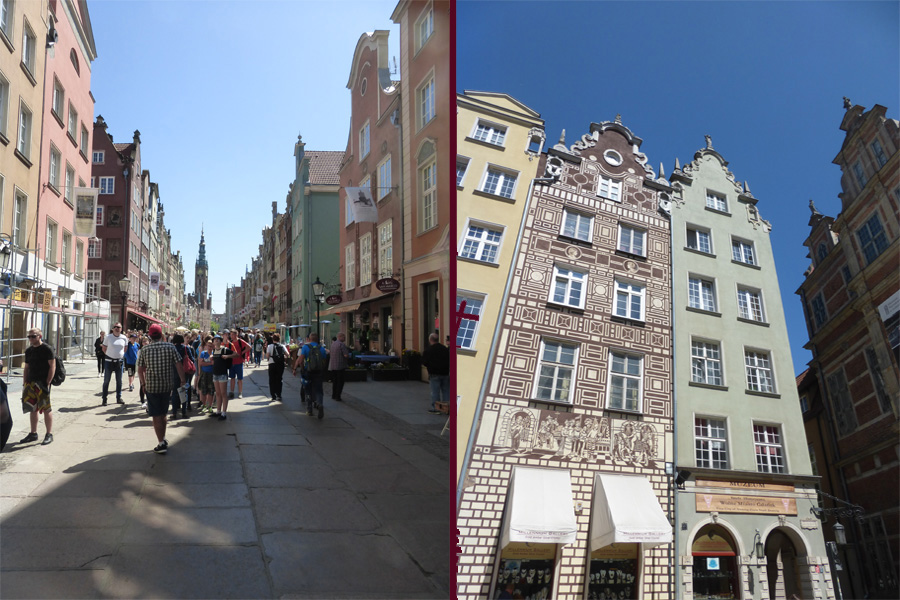 "The Long Lane or Royal Way with St. Mary's Church at the Green Gate end. Examples of the wonderfully restored buildings on the Long Lane (right)."
"The Long Lane or Royal Way with St. Mary's Church at the Green Gate end. Examples of the wonderfully restored buildings on the Long Lane (right)."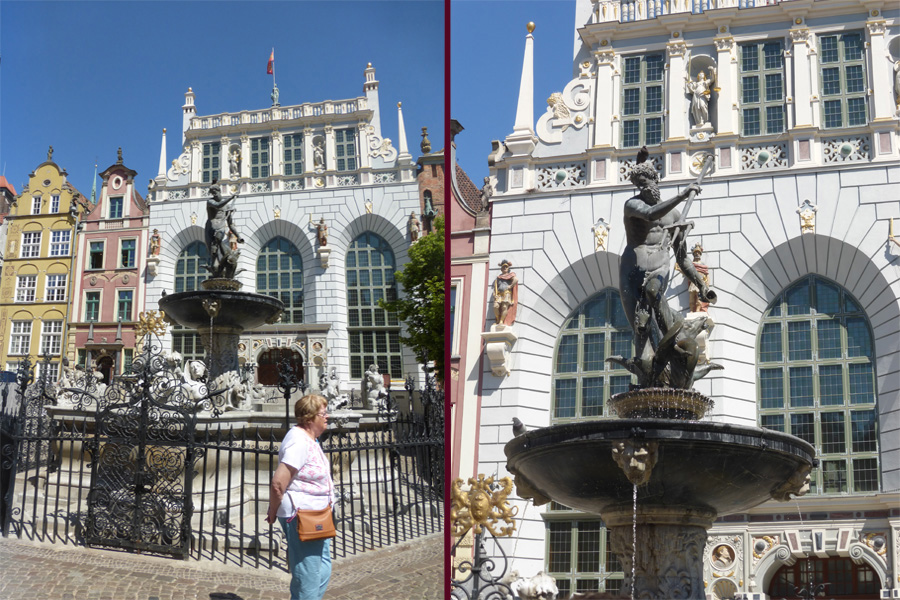 "Neptune Fountain in front of Artus Manor. The bronze statue of the Roman god of the sea was first erected in 1549, before being aptly made into a fountain in 1633. Neptune was dismantled and hidden during World War II and didn’t come out of hiding until 1954 when he was restored to his rightful place in the heart of the city, reminding us of Gdansk’s relationship to the sea."
"Neptune Fountain in front of Artus Manor. The bronze statue of the Roman god of the sea was first erected in 1549, before being aptly made into a fountain in 1633. Neptune was dismantled and hidden during World War II and didn’t come out of hiding until 1954 when he was restored to his rightful place in the heart of the city, reminding us of Gdansk’s relationship to the sea."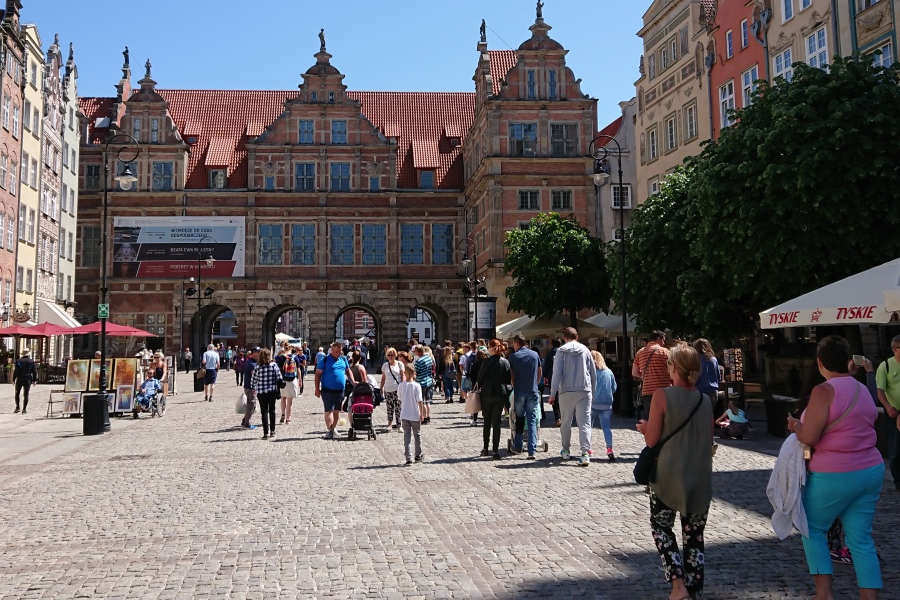 "At the end of the Long Lane approaching the beautiful Green Gate."
"At the end of the Long Lane approaching the beautiful Green Gate."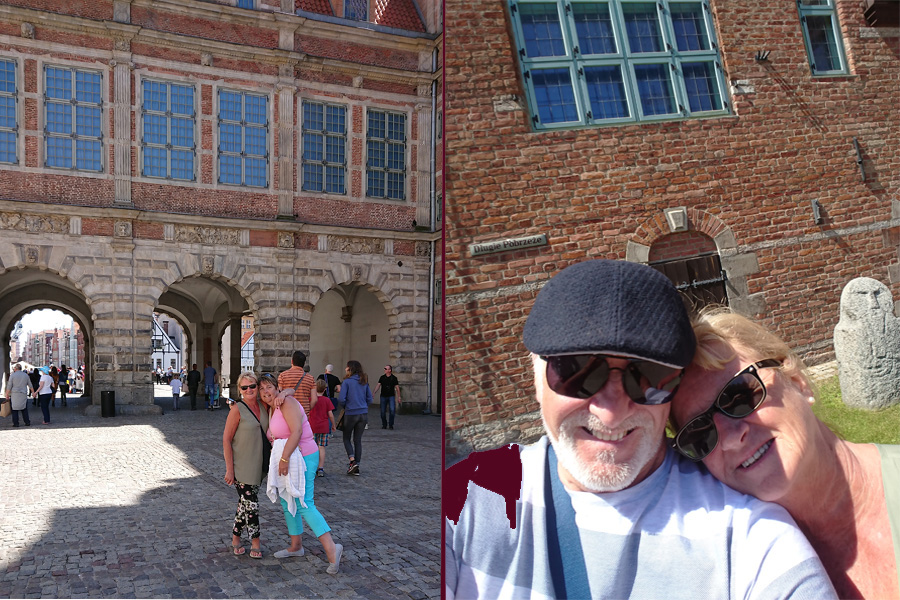 "The Green Gate"
"The Green Gate"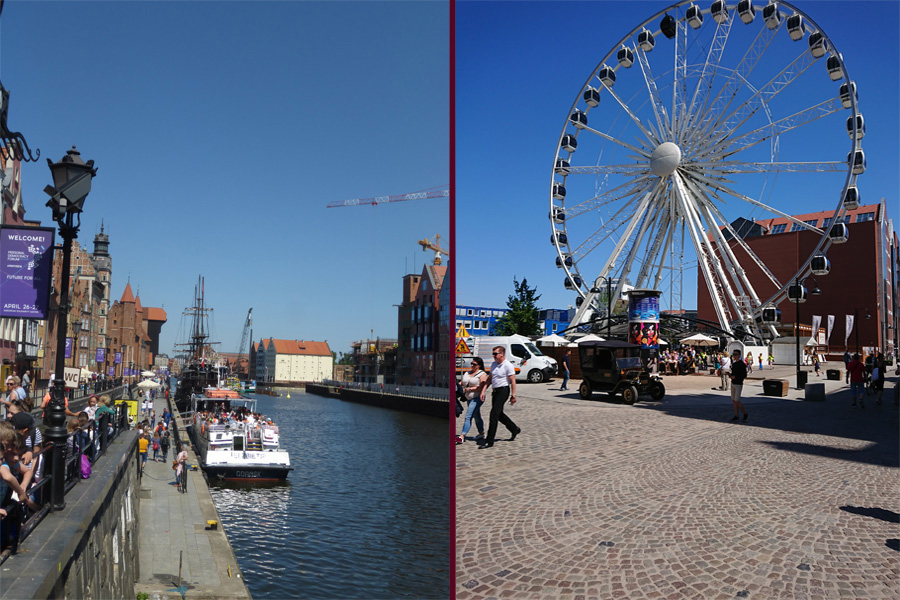 "The waterfront with fake ship and the crane in the distance. Ferris wheel and funfair (right)."
"The waterfront with fake ship and the crane in the distance. Ferris wheel and funfair (right)."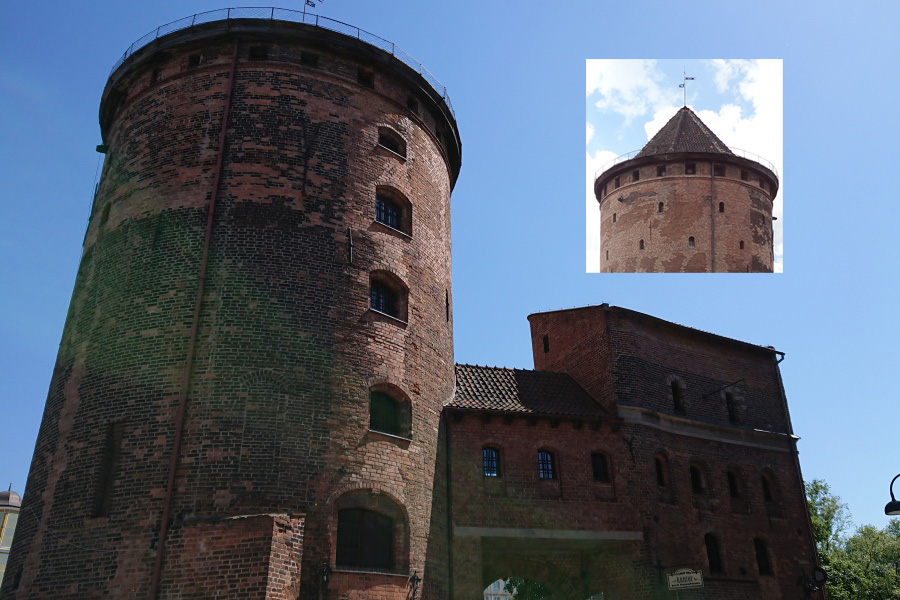 "The round stone tower is the Milk Cans Tower (Stągiewna, Milchkannenturm), so called because it looks like a milk can. The angle I took the photo doesn't show the roof feature (inset) that gives it the name."
"The round stone tower is the Milk Cans Tower (Stągiewna, Milchkannenturm), so called because it looks like a milk can. The angle I took the photo doesn't show the roof feature (inset) that gives it the name."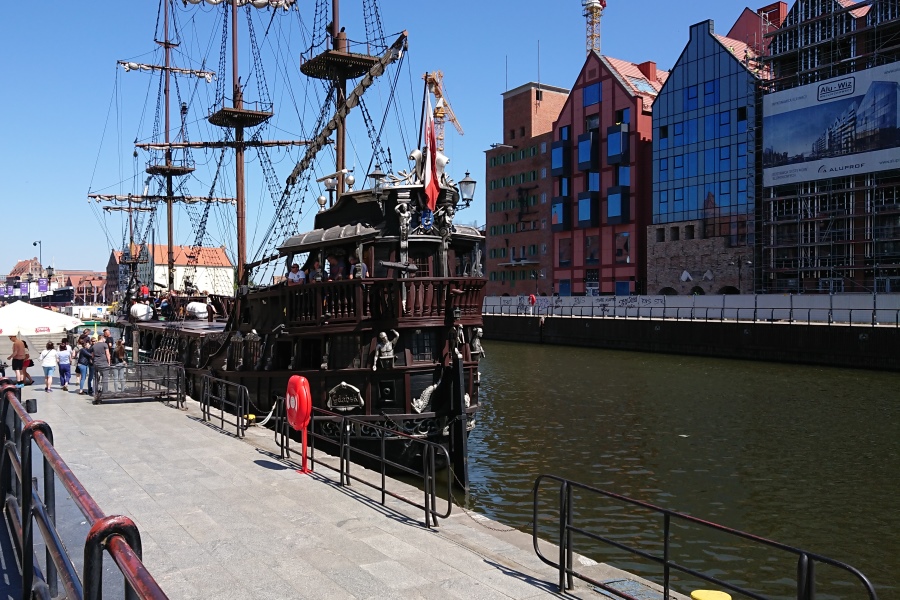 "There are two sister 'mock' pirate ships, The Galeon Lew and Czarna Perla (The Lion Galleon and The Black Pearl) that ferry people back and forth between Gdansk waterfront and Westerplatte. "
"There are two sister 'mock' pirate ships, The Galeon Lew and Czarna Perla (The Lion Galleon and The Black Pearl) that ferry people back and forth between Gdansk waterfront and Westerplatte. "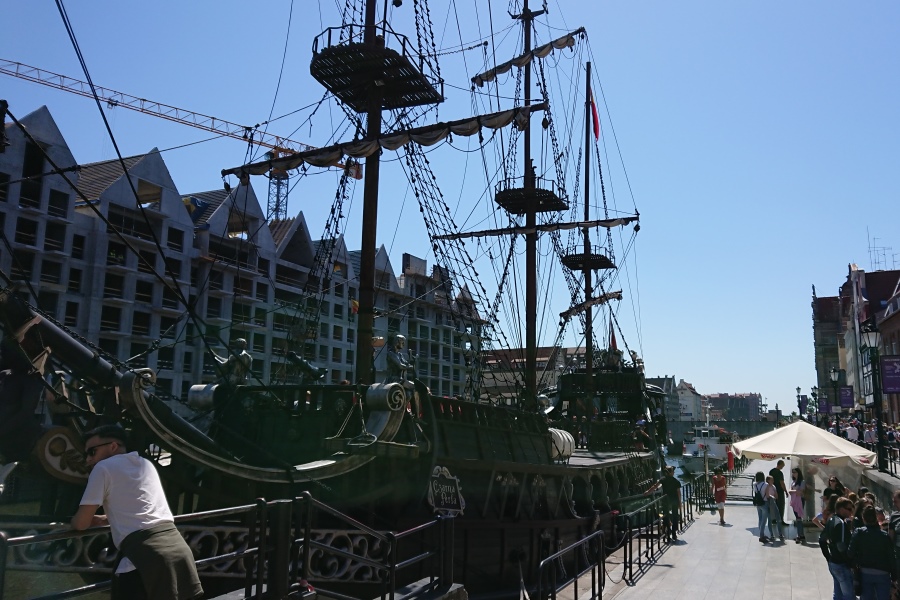
 "The Green Gate pictured from the bridge over the Motlawa river."
"The Green Gate pictured from the bridge over the Motlawa river."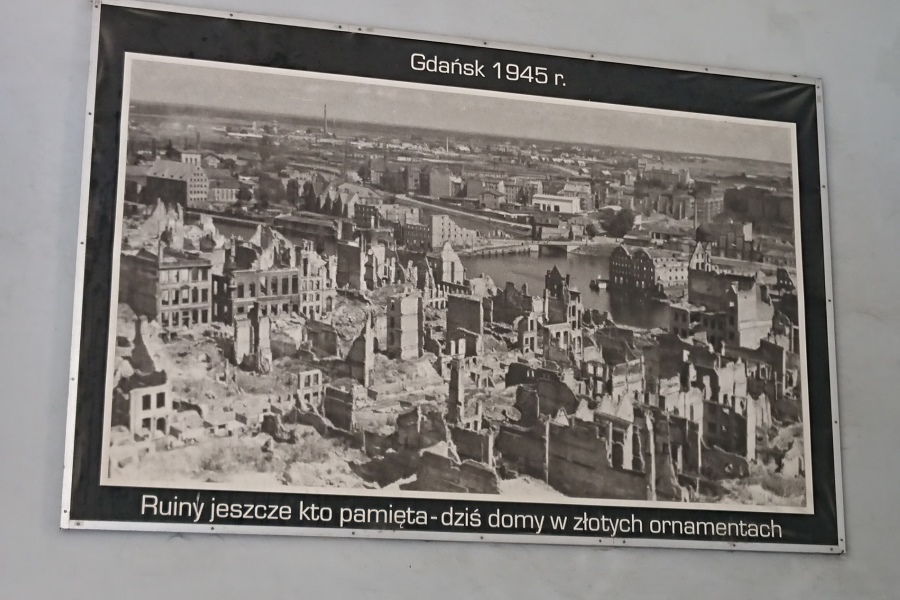 "The caption reads 'The ruins still today-who remembers the golden ornaments'."
"The caption reads 'The ruins still today-who remembers the golden ornaments'."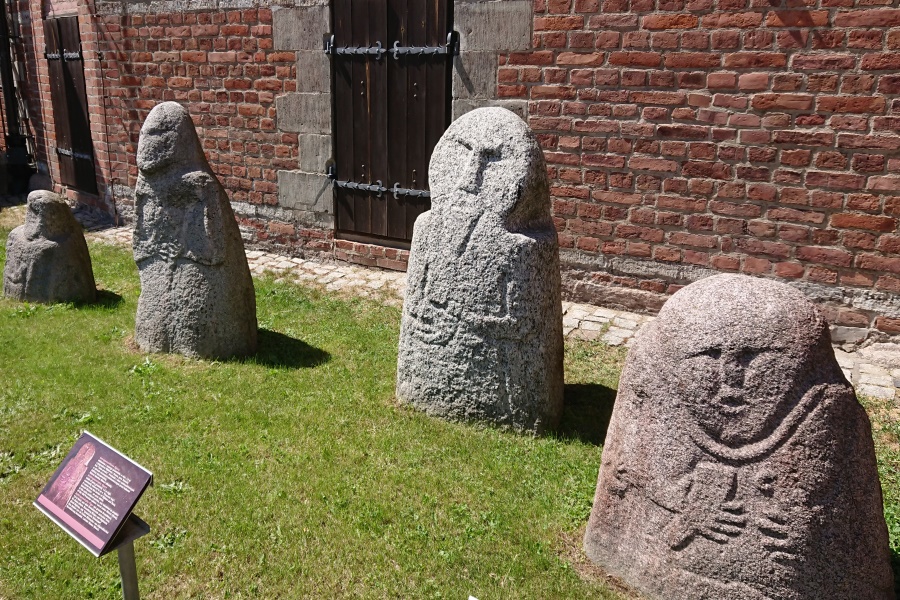 "Pictish Stones - ancient stones (10,000 years old) found along a now-modern road several hundred years ago. They have names like “the old hag” (2nd left)."
"Pictish Stones - ancient stones (10,000 years old) found along a now-modern road several hundred years ago. They have names like “the old hag” (2nd left)."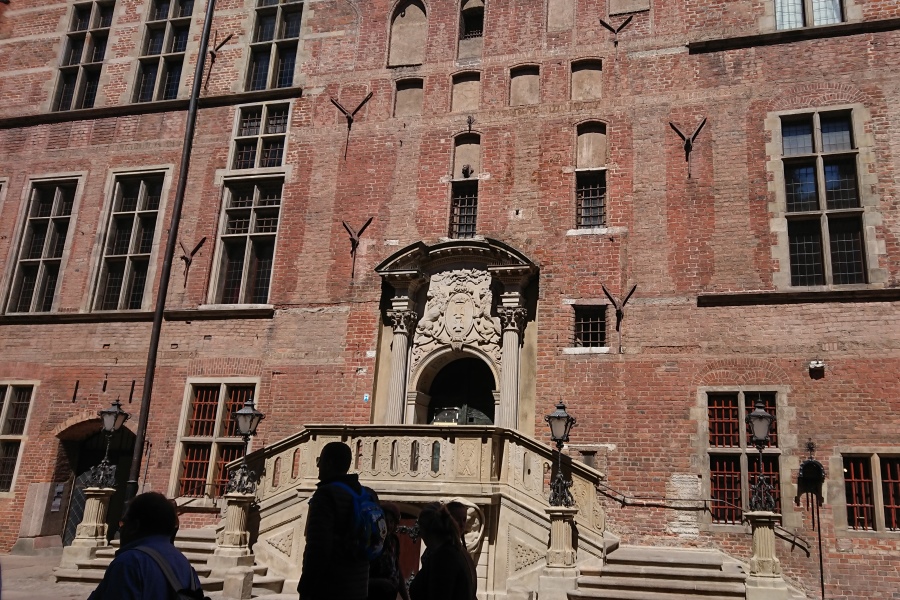 "The entrance to the Gdańsk Historical Museum shows the history of Gdańsk from the Middle Ages up to the 20th Century. The museum is based in the Main City Hall which is home to the famous Red Room. It was also associated with the legendary Artus Manor, the representative headquarters of the merchant brotherhoods, something like King Arthur’s Knights of the Round Table."
"The entrance to the Gdańsk Historical Museum shows the history of Gdańsk from the Middle Ages up to the 20th Century. The museum is based in the Main City Hall which is home to the famous Red Room. It was also associated with the legendary Artus Manor, the representative headquarters of the merchant brotherhoods, something like King Arthur’s Knights of the Round Table."
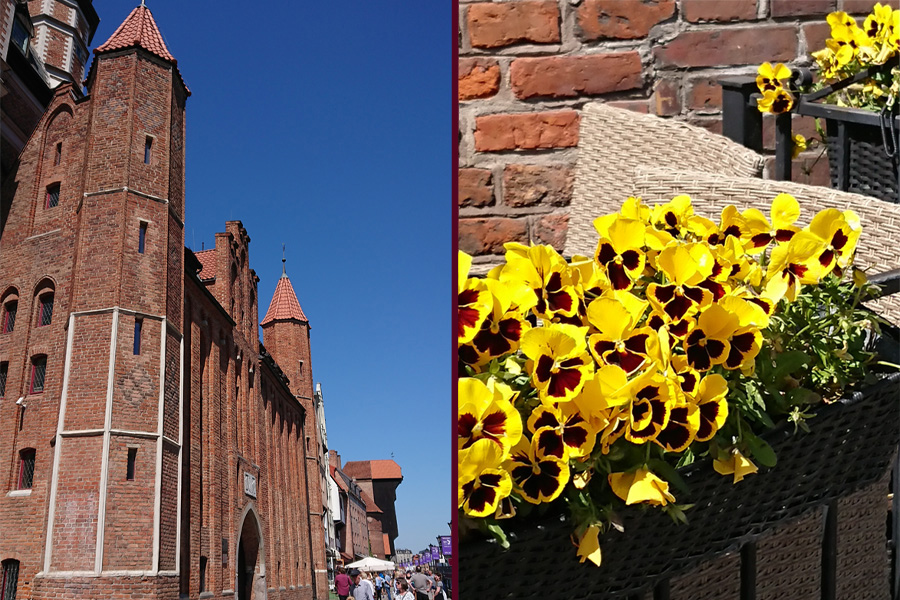 " The Chlebnicka Gate - one of the historic water gates in Gdansk at the end of the Chlebnicka street. In its present Gothic form the gate dates back to the 15th century, making it the oldest of the three surviving late Gothic water gates in Gdansk."
" The Chlebnicka Gate - one of the historic water gates in Gdansk at the end of the Chlebnicka street. In its present Gothic form the gate dates back to the 15th century, making it the oldest of the three surviving late Gothic water gates in Gdansk."